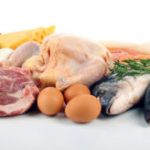It is now nine months since the suggested changeover date from the previous guidelines for texture modification and thickened fluids to IDDSI.
Many facilities have now moved to using the new IDDSI terminology, However, there are challenges for aged care foodservice in providing meals that are suitable while still maintaining consumer satisfaction and person-centered care.
Ensuring that documentation is accurate in reflecting the correct requirements for each person, while taking into account customer choice can be difficult for foodservice.
The challenges faced by each facility may differ depending on the facility size and whether meals are prepared on or off site. Larger facilities with more consumers requiring texture modified meals may take a different approach to preparation than smaller sites with only a few consumers.
Production challenges
The two levels that appear to present the greatest challenges are Level 6 – Soft and Bite Sized and Level 5 – Minced & Moist. These Levels have a prescribed particle size, testing requirements and restrictions on some vegetables including those with skins such as peas and corn and stringy vegetables like string beans and celery.
The presentation of some Level 6 Soft and Bite Sized dishes will look quite different to Level 7 Regular and Level 7 Easy to Chew that do not have particle restrictions.
The particle size for Level 5 – Minced & Moist of 4mm x 4mm x 15mm make this level distinctly different to Level 4 Puree but preparation remains a challenge for some sites, particularly those with small numbers.
Larger sites with greater volumes of this level can use a mincer or cutter but sites with only a few may find it easier to hand cut or use a smaller domestic mincer/cutter.
Wherever possible, sites should avoid using pureed vegetables for Level 5 – Minced & Moist opting to meet the particle size whenever possible.
Person-centered care and choice
Some consumers are signing customer choice agreements or disclaimers to continue to choose items, particularly bread, which may not be suitable for the Level that has been advised.
Bread is occasionally allowed by the Speech Pathologist for Level 7 Easy to Chew and Level 6 Soft and Bite sized. The challenge then is to provide bread for these consumers while continuing to ensure that bread is not included for other residents who cannot have it.
Soups and dual consistencies
Providing soup for Level 4 – Puree can be challenging if the original soup contains stringy vegetables such as celery or vegetables with skins such as peas or corn. These foods are not likely to be blended smooth by a stick blender and will need to be strained to be suitable for this level.
Foods that contain dual consistencies also present challenges. These include cereal with milk that is not fully absorbed, fruit salad and other fruits in juice or syrup and soup with whole food pieces in thin liquid. Dual consistencies are not suitable for Level 6 Soft and Bite sized, Level 5 – Minced & Moist or Level 4 – Pureed.
Ongoing education and auditing
There will be challenges for foodservice in providing the correct requirements for each IDDSI Level. Ongoing education for foodservice staff combined with regular auditing will be beneficial in ensuring that meals provided are suitable for each IDDSI Level required.
Your Leading Nutrition dietitian can assist with any queries you may have and provide ongoing education for foodservice and clinical staff regarding IDDSI. Leading Nutrition is currently developing an IDDSI audit tool used to check that foods and fluids are IDDSI compliant, so contact us on 1300 712 722 if you are interested in learning more.



